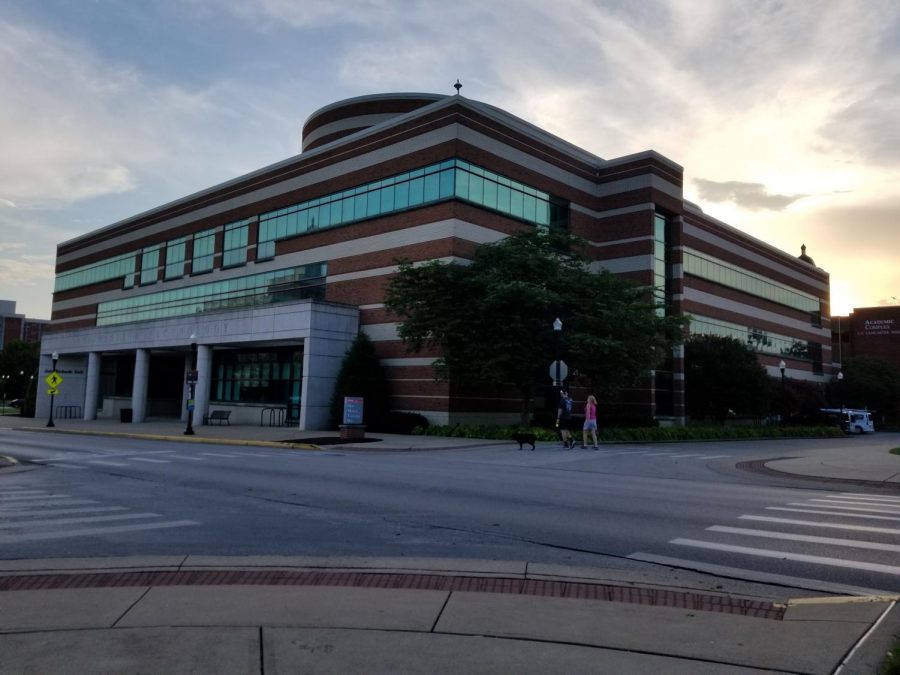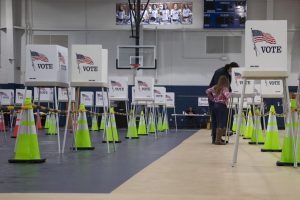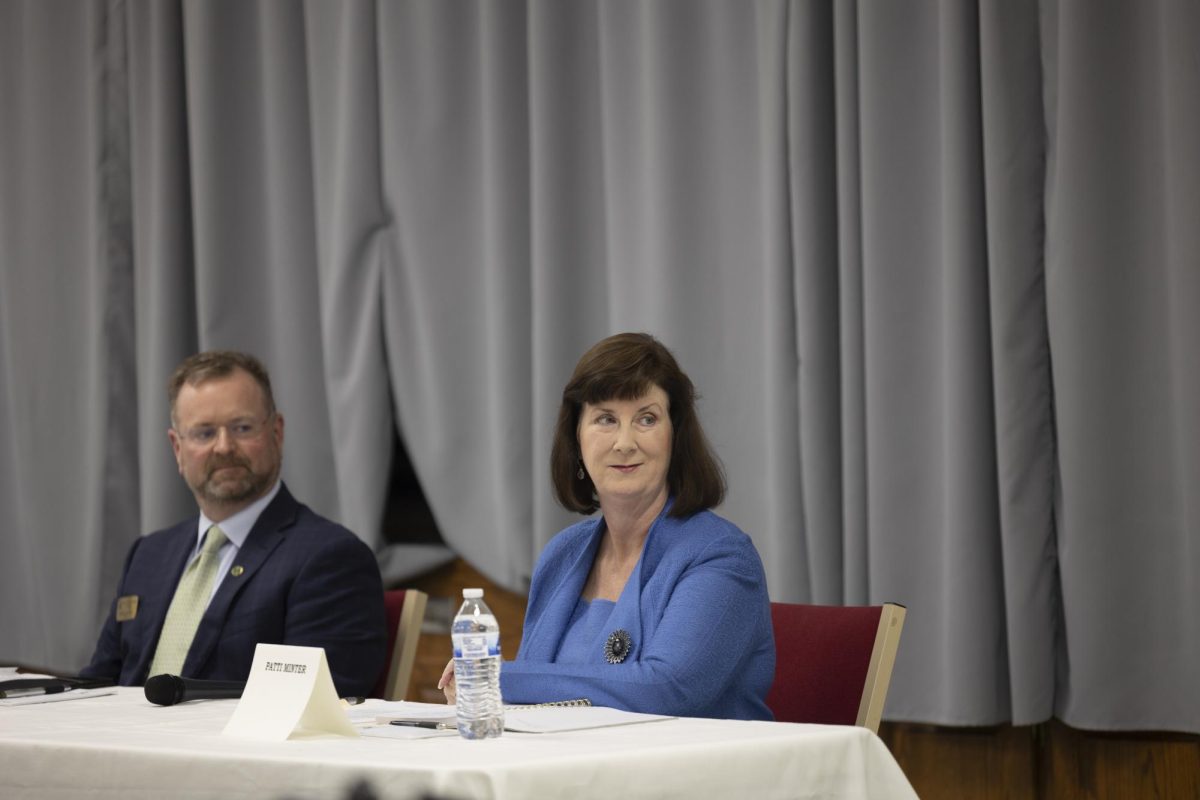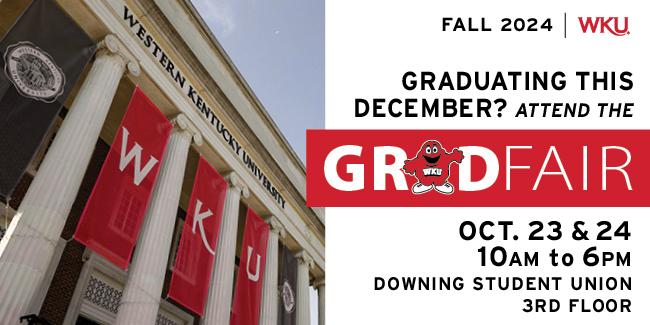Exploratory report filed for School of Media, Department of Communication merger
An exploratory committee has submitted a report regarding a potential merger between WKU’s School of Media and Department of Communications that would, if approved, see both programs housed under one roof in Jody Richards Hall.
September 13, 2022
A potential merger between WKU’s School of Media and Department of Communication is being discussed, according to a 27-page report filed by an exploratory committee made up of faculty and staff.
Terrance Brown, dean of the Potter College of Arts and Letters, said the committee created the report during the summer of 2022 but no final decision has been made at the time of writing.
“It should be clear…that no decision regarding the restructuring/merger of the School of Media nor the Department of Communication has been decided,” Brown said via email. “This decision will be determined by majority vote from eligible faculty/staff from each of the respective units.”
Brown confirmed that the vote is scheduled for the fall 2022 semester “pending future discussions.”
Ron DeMarse, director of the School of Media, said it ideally would be a merger of both location and programming.
“In theory, it should be both,” DeMarse said. “If it goes forward the idea would be like a full merger of both physical and administrative. So, instead of a School of Media and a Department of Communication – we’d have to figure out what to call it – it’d be under one roof in administrative terms but also physically.”
Among the 10 professors and faculty members included in the merger committee are Holly Payne, professor and communication programs internship coordinator for spring 2023 and Gordon D. “Mac” McKerral, professor and coordinator of WKU’s journalism program.
DeMarse and Brown said they are staying neutral until the vote takes place.
“I’m trying not to push people in either direction,” DeMarse said. “I try to stay as neutral as I can […] That way if they decide they want to do it then I’m excited to make it work.”
A professor in the Department of Communication declined to speak about a potential merger until they had met with Brown. According to Brown, the meeting will take place next month.
“It will happen in October, but we do not have the fixed date as we’ve not met as a collective to discuss the exploratory report,” Brown said.
DeMarse said the idea for the merger traces its roots back several years when public relations and advertising were moved out of Jody Richards Hall in the fall of 2017.
“At the time the School of Media had advertising and public relations, and then a decision was made by a previous dean to move them out and over into communication,” DeMarse said. “I think [this] all kind of started with those programs that used to be a part of this school, and the chance to get them back was appealing to a lot of people.”
The document includes nine numbered sections outlining the committee’s findings regarding the benefits of the restructuring to WKU students, faculty and staff and to fundraising. It also brings up concerns instructors believed should be addressed before proceeding.
To read the committee report in full, click here.
Benefits to WKU students
The Department of Communication is currently located in the Ivan Wilson Center for Fine Arts midway up the Hill while the School of Media is housed at the bottom of the Hill in Jody Richards Hall.
According to the report, one of the goals of restructuring is to bring the two departments under one roof to offer a more streamlined experience for students.
“[The merger would provide] openings to more easily create new, generative curriculum that would benefit students and aid in recruitment,” the report states. “[It would create] more opportunities for students to double-major in any combination of our programs under a singular umbrella.”
The report states a merger could strengthen the school by combining the program’s finances, help aid with advising and create a larger, more diverse faculty for students to interact with.
Students could benefit from “opportunities for professional advising by faculty” and the report states that a full-time advisor would be hired for the merged unit.
Internal structure
The report also covers administrative items including tenure, course commitments for instructors, accreditation and payment.
It also includes a template “governance document” to illustrate how the programs would be structured.
In Appendix A of the report, faculty included a sample governance document to “clearly define the administrative and personnel structure.”
“This document outlines our shared governance structure while recognizing the need for faculty in each discipline/unit to retain autonomy in specific situations given credentialing, assessment, and accreditation needs,” the report states.
The report also includes a sample organizational chart that outlines “Program Committees” and an “Executive Committee” which contains coordinators for each of the departments, from journalism and film to photojournalism and advertising.
Also in the organizational chart is the position of a school director that will preside over the entire school and will serve as an ex officio member of all other committees.
“The director provides overall leadership, working with the assistant director, program coordinators, and advisors,” the report states. “Advisors and program coordinators will be appointed by the director, in consultation with the Executive Committee, and confirmed by the appropriate full-time faculty by majority vote.”
Each of the committees will report their findings to the school director.
Faculty on those committees, when not specified in the Faculty Handbook or “subject to other special membership requirements,” would rotate among eligible faculty members to better involve and represent all areas of the new school.
Concerns
Some concerns from faculty noted in the report are that a merged unit could “lack commonality” and that some classes might be “forced to change their curricula in a way that diminishes the focused approach necessary for some careers.”
Another concern is a loss of identity of some programs and lack of investment from PCAL.
“It would be difficult, if not impossible, to do all the positive things […] if PCAL does not afford a merged unit with the resources for the staffing,” the report states. “Fundraising must be a priority!”
Administration reporter Michael Crimmins can be reached at [email protected]. Follow him on Twitter @michael_crimm















